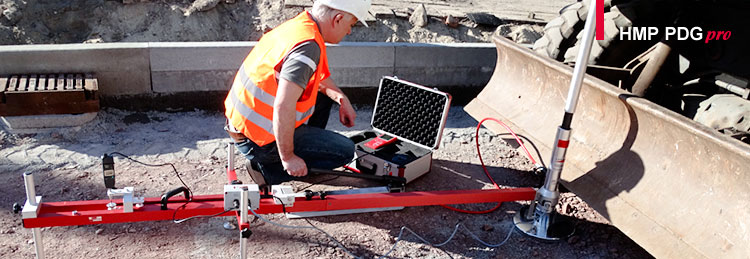The test method
|
Dynamic probing acc. to DIN EN ISO 22476-2 is used for subsoil investigation and provides information about the bulk density of the existing soil layers. It supplies important hints on excavation resistance and possible settlements. A distinction is made between heavy dynamic probing (DPH), medium dynamic probing (DPM) and light dynamic probing (DPL). During dynamic probing, the probing rod, equipped with a tip and a defined cross-section, are driven into the soil by means of a standardized, constant impact THE DYNAMIC PROBING force. The penetration resistance provides a precise statement on the soil stability. The weight (ram) is lifted again by means of compressed air in the case of pneumatic penetrometer and by means of a chain hoist in the case of me-chanical penetrometer. The penetration resistance results from the number of impacts, which is re-quired to ram the probe to a defined penetration depth. |
|
| The weight (ram) is lifted again by means of compressed air in the case of pneumatic penetrometer and by means of a chain hoist in the case of me-chanical penetrometer. The penetration resistance results from the number of impacts, which is re-quired to ram the probe to a defined penetration depth. The number of impacts per 10 cm is inserted in proportion to depth in the probing graph. No samples are taken during this measurement. |
|
Areas of application
|
|



